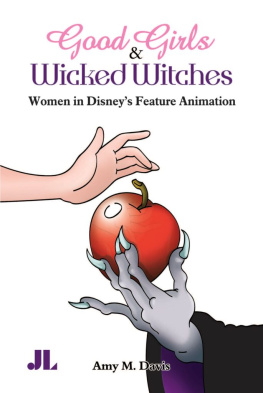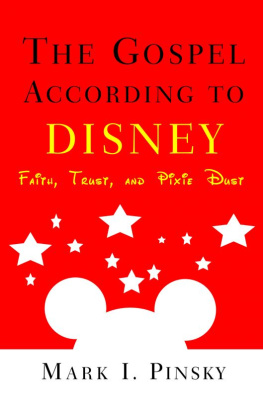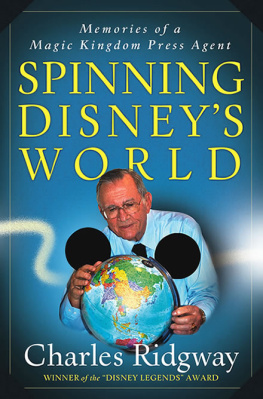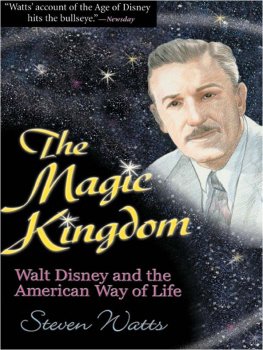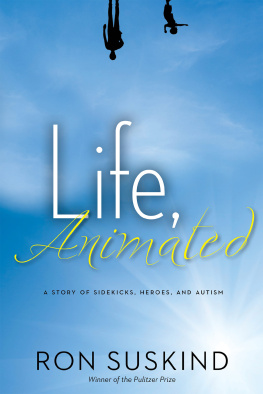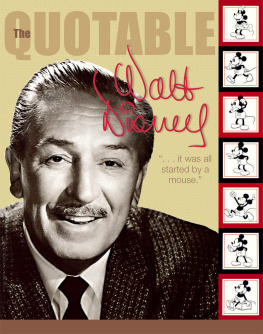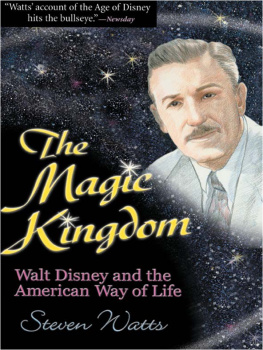About this book
Good Girls and Wicked Witches: Women in Disneys Feature Animation, by Amy Davis, looks at how human female characters have been represented during the first 70 years of feature-length animation at Disney. Tallying up which films have had human females in leading roles and analysing how such issues as activity/passivity have been handled, this book re-examines the notion that all Disney heroines are rewarded for passivity, and contextualises these films within the larger Hollywood landscape in which they were produced.
The subject of women and how they were regarded over the course of the twentieth century is not by any means a new subject. Writers, feminists, anti-feminists, politicians, political commentators, psychologists, journalists, celebrities, housewives, students, historians, and many others have written on this subject in varying degrees of depth and seriousness.
This book analyses the construction of (mainly human) female characters in the animated films of the Walt Disney Studio between 1937 and 2004. It is based on the assumption that, in their representations of femininity, Disney films both reflected and helped shape the attitudes of the wider society, both at the time of their first release and subsequently. It attempts to establish the extent to which these characterisations were shaped by wider popular stereotypes. Moreover, because within American animation it is the work of the Disney Studio which has reigned and continues to reign supreme within its field, and because most of the major animated films created in Hollywood have been produced by Walt Disneys studio, it is upon these films that the book concentrates.
Biography
Amy M. Davis is a lecturer in Film Studies at the University of Hull. The author of several papers on Disney feature animation and the Disney Studio, Good Girls & Wicked Witches is her first large study of the Disney studios output, and grew out of her doctoral work in the history department at UCL.

British Library Cataloguing in Publication Data
Good Girls and Wicked Witches: Women in Disneys Feature Animation
A catalogue entry for this book is available from the British Library
Ebook edition ISBN: 978-0-86196-901-2
Ebook edition published by
John Libbey Publishing Ltd, 3 Leicester Road, New Barnet, Herts EN5 5EW,
United Kingdom
e-mail:
Printed and electronic book orders (Worldwide): Indiana University Press, Herman B Wells Library 350, 1320E. 10th St., Bloomington, IN 47405, USA
www.iupress.indiana.edu
2011 Copyright John Libbey Publishing Ltd. All rights reserved.
Contents
Acknowledgements
Any project of this size is impossible to complete without the help of a great many people. There is no way to thank individually each and everyone of them, so I give them my most sincere thanks for their moral support, encouragement, advice, and general cheering on, and trust that they know who they are. Amongst them are David Eldridge, whose willingness to talk shop (even on holiday!), and his friendship and example, always inspire me to work harder; Alicia King, who has always been an email away in times of joy and crisis, and who even went above and beyond in helping me proofread; Cara Gunther Waterhouse, whos been a true friend for nearly half our lives, always shared my passion for anything Disney (even if she does prefer the live-action films!), and inspired my desire to try out life in the UK. More recently, thanks are due to Mire Messenger-Davies, John Davies, Ciara Chambers, Niamh OSullivan, Andrew Boyce, and Helen Thornham, whose friendship and emotional support in the final stages of this project, not to mention the dog-sitting during research trips, have been of enormous help! Also, extra thanks to Helen for her hard work on the index!
Special thanks, however, must be given to those who gave exceptional help to me in some way. My brother, Brian Davis, has always been most able and willing to talk Disney with me, and given me much inspiration and food for thought in the process. My grandmother, Betty Erwin, has used every birthday, Christmas, Easter, and every holiday in between as an excuse to give me the videos and dvds Ive needed along the way. She also is the one who took me on my first trip to Walt Disney World back in 1977 (when I was just five years old), and has always overflowed with love and generosity to help me along the way. My mother, Kitty Davis, deserves the most thanks not only has she tirelessly supported me in every way possible, shes even provided spelling and proof-reading help at various stages. Most importantly, she took me to see my first viewings of many of the films in this study (and made me stay to the end, even when queens turned into hags and Bambis mother got shot!), and has given me and shared with me her love of movies of every kind. She has been the kind of mother the heroines in this book could only ever have wished for.
Finally, my sincere thanks must be given to Dr. Melvyn Stokes, who supervised my MA dissertation and Ph.D. thesis in the history department at UCL, and helped to launch me in my Mickey Mouse career: when casting about for a suitable subject for my MA dissertation, a conversation with my brother still lingering in my mind, I suggested, somewhat flippantly, Why dont I do my dissertation on Disney? His brief reply changed my life: Why not?
Introduction
T he subject of women and how they were regarded over the course of the modern era is not by any means new. Writers, feminists, anti-feminists, politicians, political commentators, psychologists, journalists, celebrities, housewives, students, historians, and many others have written on this subject in varying degrees of depth and seriousness. But in the twentieth century, as a mainly print-based culture gave way to one which, at the start of the twenty-first century, is primarily image- and media-based, it was the way these physical/cultural/social expectations were tied together with and within the medium of film, and disseminated in the person of the actress (be she a live woman or a drawing), which became important. It is with the images of women in popular culture that all of the aspects of American societys changing attitudes towards women were mapped.
This book analyses the construction of (mainly human) female characters in the animated films of the Walt Disney Studio between 1937 and 2004. It is based on the assumption that, in their representations of femininity, Disney films reflected the attitudes of the wider society from which they emerged, and that their enduring popularity is evidence that the depictions they contain would continue to resonate as the films were re-released in later decades. It attempts to establish the extent to which these characterisations were shaped by wider popular stereotypes by putting the films into the context of Hollywood films from the era in which these Disney films were made. Moreover, because of the nature of the animated film because it is a unique combination of printed popular culture (as in drawings done for newspapers, books, and magazines) and the twentieth centurys later emphasis on more life-like visual media (such as film, television, and various forms of photography), it is argued here that it is within the most constructed of all moving images of the female form the heroine of the animated film that the most telling aspects of Woman as the subject of Hollywood iconography and (in the case of the output of US animation studios) ideas of American womanhood are to be found. Furthermore, because within the subject of US animation it is the work of the Disney Studio which has reigned and continues to reign supreme within its field, and because most of the major animated films created in Hollywood have been produced by Walt Disneys studio, it is upon these films that this study concentrates.
Next page
